- Home
- slideshows
- indiainsider
- The issue of the statehood of Delhi
The issue of the statehood of Delhi
BJP on Delhi’s statehood

...And, here’s why

The 2015 election was when AAP’s central platform gunning was for seats in Legislative Assembly saying that they would get Delhi full statehood. They even drafted a State of Delhi bill for powers that are currently under the central control.
The matter hasn’t reached a definitive end, yet.
Congress, the late entrant
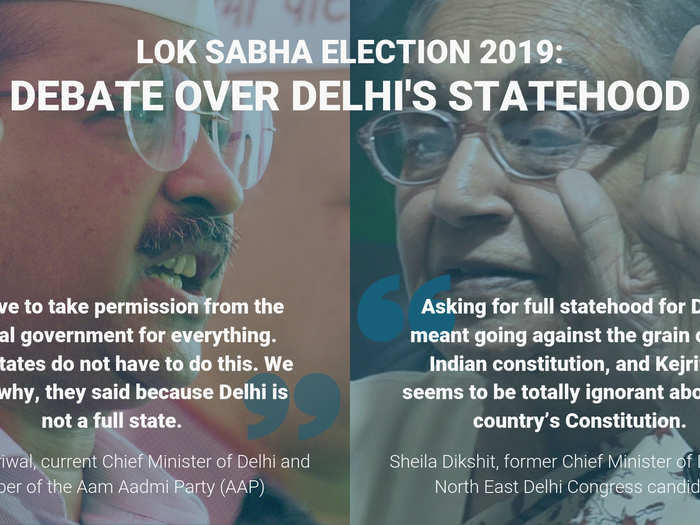
While, the BJP was a part of the statehood conversation before AAP even existed. Congress only talked about it in 2015, in the same Legislative Assembly election as AAP.
Congress barely ever spoke of centre-state relations affecting Delhi governance. Except when former CM Sheila Dikshit complained about the “multiplicity of agencies and authorities in the city bogging down its development”, during 2013 Delhi Assembly Elections.
The powers of statehood
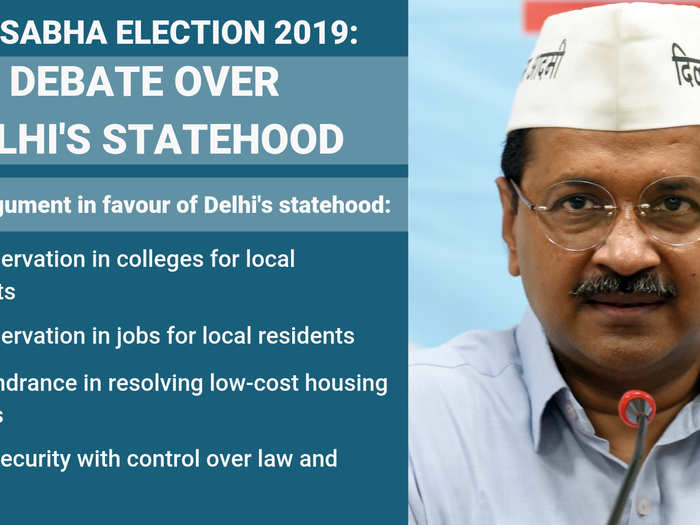
AAP, assuming that it can get statehood for Delhi, is alerady promising 85% reservation in colleges and 65% jobs for people who are from the national capital.
Comparing Delhi to London, Berlin and other capitals around the world, AAP argues that these cities have full control over their police, housing, transport, local bodies and city planning.
According to Delhi CM Arvind Kejriwal, if public services were under the control of the government in Delhi, low-cost housing projects — like the one in Jahangir Puri where flats are lying abandoned due to their price and size — and issues around safety — could be efficiently addressed.
Delhi’s autonomy would mean that the lack of coordination would no longer be a hindrance.
The national capital is usually caught between the state-center machinery when faced crises like the malaria epidemic or winter smog. Instead of taking quick and productive countermeasures, the red tape of bureaucracy moves slower than usual; while departments play the blame game.
Statehood or not, traders aren’t happy
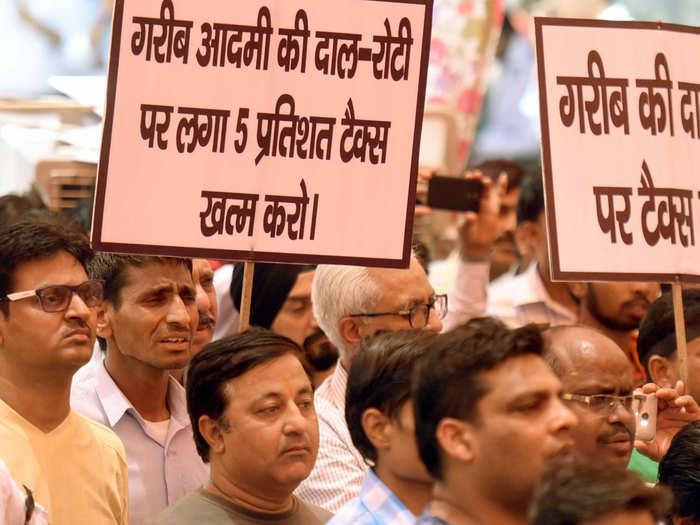
Chandni Chowk wholesale market traders join in a demonstration in protest of GST implementation on many commodities which were never earlier in tax net (Source: BCCL)
Voters of Chandni Chowk, one of the oldest constituencies of India — who account for 30% of the voting population in Delhi — aren’t too happy, regardless of statehood.
The implementation of the goods and services tax (GST) and the demonetization exercise threw a lot of them in a lurch.
The incumbent BJP candidate, Harsh Vardhan, asserts that GST hasn’t wavered ‘people’s faith’ in Modi.
His opponent from Congress, JS Agarwal criticizes him for being ‘removed’ from the ground reality and promises to look into the issues brought on by the BJP.
While traders in Chandni Chowk seen to be satisfied with the AAP, the general sentiment of the community is to vote for a national party into power at the center, according to a report in The Caravan.
The problem isn’t limited to Chandi Chowk. Trading hubs in New Delhi like Lajpat Nagar, Karol Bagh and South Extension aren’t too happy either. The issue goes beyond policy where the incumbent BJP candidate, Meenakshi Lekhi, is accused of being inaccessible.
This may give Congress candidate Ajay Maken and AAP’s first time contestant, Brijesh Goyal, a chance to change the power structure.
Some candidates don’t need statehood to back them up
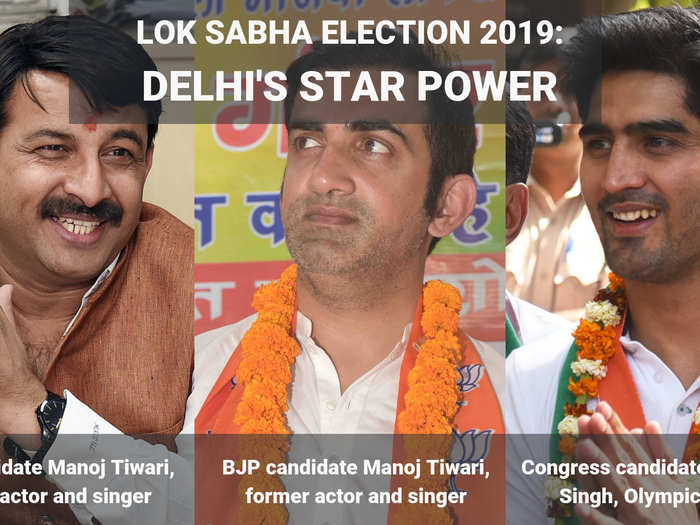
Like the elections in Mumbai, the polls in Delhi come with their own star power. In East Delhi, former cricketer Gautam Gambhir announced his last minute candidature for BJP, after joining the party barely a month back.
Calling himself an East Delhi boy, his campaign says that his opponents — Atishi from AAP and former Delhi minister, Arvinder Singh Lovely — are ‘political tourists’.
Gambhir’s platform right now is to keep the promises that BJP has made to the constituency like shutting down the Ghazipur landfill which is an eyesore and a disease dump, and providing access to clean drinking water.
Manoj Tiwari, in North East Delhi, is another BJP candidate with star power to back him up. He’s already won the election once, in 2014, by a margin of almost 100,000 votes.
But it might not be so easy for this Bhojpuri actor and singer to win this time around. He’s pitted against Sheila Dikshit, the Congress candidate who was the Delhi Chief Minister for 15 years running, until AAP came to power.
The Congress party brought in its own sporting star Vijender Singh, to field the seat from South Delhi against BJP’s incumbent, Ramesh Bidhuri and AAP’s Raghav Chadha.
AAP is the only party which isn’t fielding stars, remaining true to its name-aam aadmi (common man’s) party.
And, why AAP doesn’t need star power
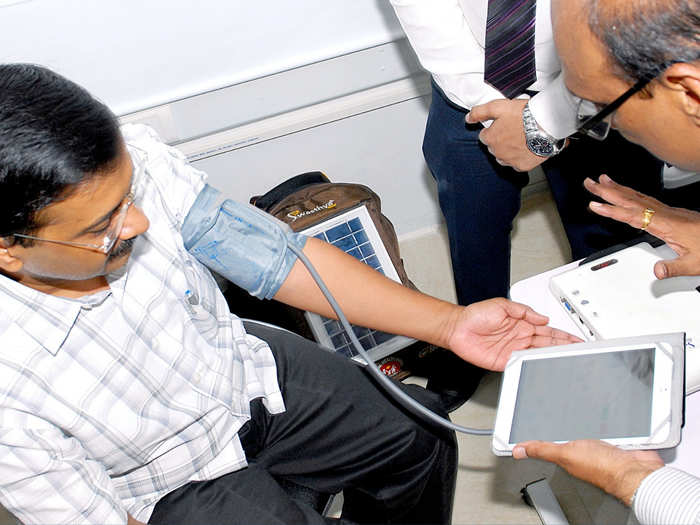
Delhi Chief Minister, Arvind Kejriwal inaugurates the 1st Mohalla Clinic in Rajiv Gandhi JJ Punjabi Colony, New Delhi (Source: BCCL)
AAP gained favour with the lower and middle class citizens of the city where it is being applauded its work in government schools and healthcare— with subsided dispensaries called ‘Mohalla’ clinics.
Congress is playing the infrastructure and development card, by highlighting the work carried out under Sheila Dikshit’s tenure, like Delhi Metro and the city’s many flyovers.
The BJP is taking a rough turn away from development, towards nationalism. Meenakshi Lekhi defends the party’s stance and claims that these issues are interlinked. Her top three priorities are--‘Swachh Bharat 2.0’, skills training and strengthening the telecom network.
Yet, the issue of housing looms large. Low cost housing projects have stagnated, forcing migrants into unauthorised colonies since nothing else is affordable. These colonies face issues like land allotment and ownership as there is no regulation to address them.
This problem would fall within the state purview if Delhi were a state. Now, it is a central issue.
Winter is coming
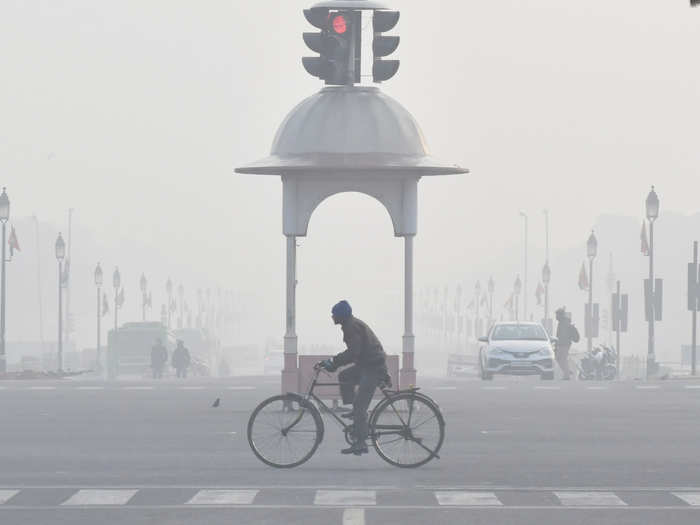
Caption: Morning Smog at Vijay Chowk in Delhi during the winter
Amid all of Delhi’s municipal problems, there’s one key issue that none of the political candidates are keen on addressing -- its horrendous air quality.
One would think that the political heavyweights in Delhi would want to remedy the fact that it is now one of the world’s most polluted cities.
The National Clean Air Programme (NCAP) was introduced by the Indian government in January this year with five-year goals to address the problem. But again, the NCAP comes under the purview of the central government — not the state.
According to a survey by the Association for Democratic Reforms (ADR), 44.52% respondents believe that pollution is the key issue, second only to traffic congestion.
To be fair, the BJP and Congress, addressed climate change in their political manifestos — albeit at a national level. BJP promises to focus on the 102 most polluted cities in India while Congress has recognized air pollution as a national public health emergency.
So Nitin Gadkari, the current Union Minister and a member of the BJP — who isn’t contesting from any of the seats in Delhi — is the only one campaigning around it, claiming that he will rid the city of air and water pollution in three years.Traffic congestion
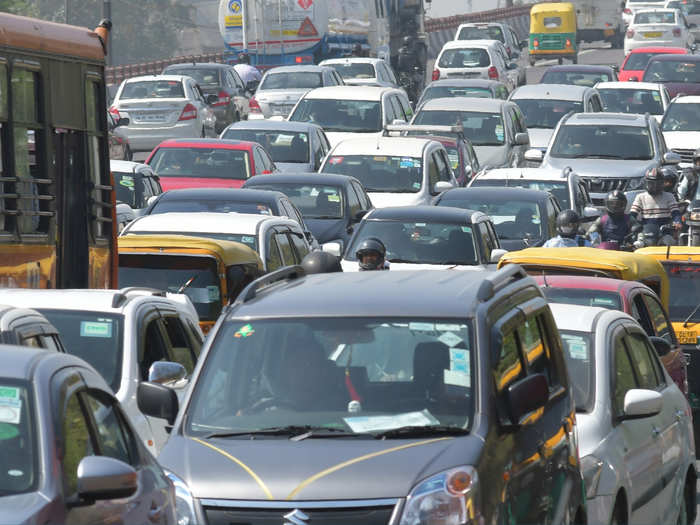
Traffic Congestion at Lajpat Nagar flyover near Ashram (BCCL)
Despite the maze of flyovers that cover Delhi’s landscape, the traffic congestion in the city has not eased, as the national capital brings in more and more job seekers everyday.
According to the Centre for Science and Environment (CSE), “(The) Current obsession to only build and widen roads and make elevated roads and parking facilities will lead to more congestion. Need public transport strategies, walking infrastructure along with appropriate pricing of car usage to curb motorisation.”
In ADR’s survey, respondents rated Delhi at 2.27 on a scale of 1 to 5, with respect to traffic reforms.
The issue of traffic exits within and beyond the city. Pusta Road, that falls within the North East Delhi constituency, is one of the most congested roads in the city, connecting to the capital of Uttar Pradesh (UP).
Tiwari, the BJP candidate from the assembly seat, claims to initiate the National Highway 709-B project that will connect Akshardham in Delhi to Saharanpur in UP.
Dilip Pandey, the AAP candidate from the same constituency is advocating for a new corridor that will link Bhajanpura to the Bhopura border, citing the success of the Signature Bridge, “One of the major breakthroughs of our party was the construction of Signature Bridge, which is a blessing for commuters crossing parts of north-east Delhi every day. We will see more flyovers and corridors in the constituency soon.”
Speaking of water
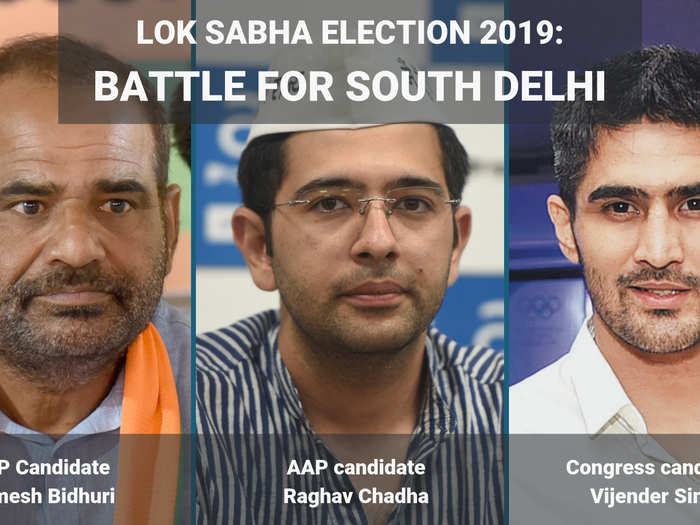
Not just Delhi, but all of India is suffering from the ‘worst water crisis in history’ according to Niti Aayog’s Composite Water Management Index.
For South Delhi, it’s a primary poll issue.
Raghav Chadha, the AAP candidate for South Delhi, has promised to provide adequate supply of piped water to authorised colonies in the area. The incumbent BJP candidate, Ramesh Bidhuri, promised to set up water treatment plants in the requisite areas within six months if he’s elected.
The only candidate who isn’t packing a punch on this issue, is Vijender Singh, the acclaimed boxer and Congress candidate. His focus is on youth and sports.
According to the Daily Pioneer, candidates in South Delhi care more about reducing their water bills than getting statehood.
Critics issue warnings
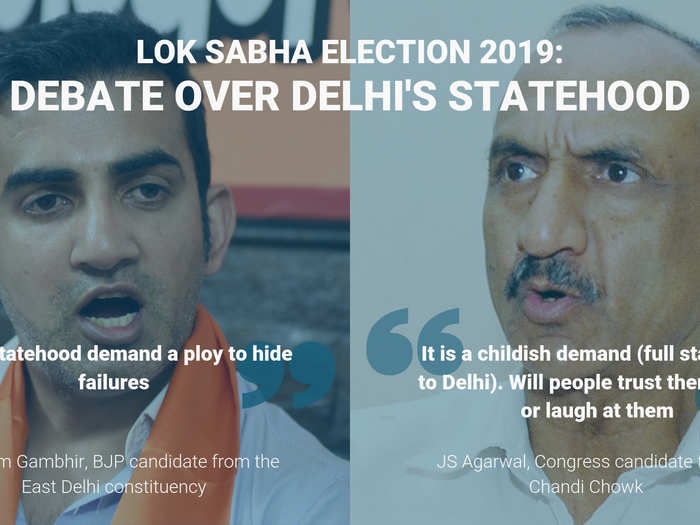
Critics of full statehood for Delhi say that it’s a mere ploy by the AAP to excuse its own inadequacies. According to them, it’s a strategic move to rally public support with no long-term vision in place.
And, AAP’s detailed analysis of how full statehood versus the current situation would help voters is only a political move to make their electoral promises dependent on a single issue.
Sheila Dikshit said, “Asking for full statehood for Delhi meant going against the grain of the Indian constitution, and Kejriwal seems to be totally ignorant about the country’s Constitution.”
Significance of polls in Delhi
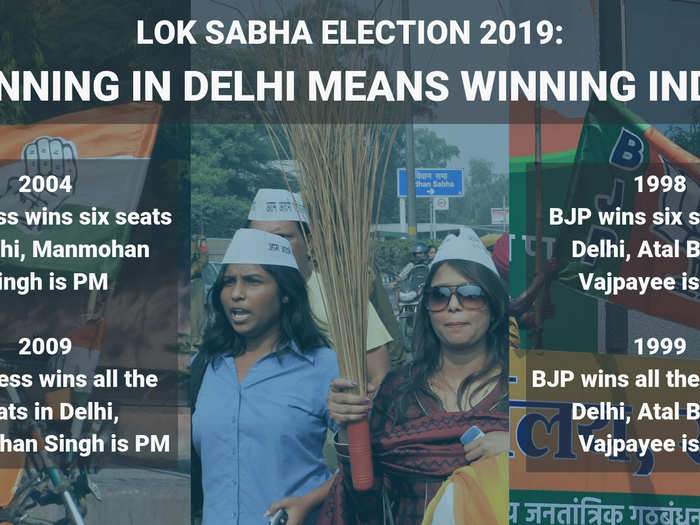
Why is it important for a national party to remain in power in Delhi? Apart from having an ally in the backyard, Delhi has been historically lucky.
Since 1998, the party that has won the votes in Delhi went on to form the central government. The first was BJP which won six out of the seven seats in Delhi, and formed a coalition government under Atal Bihari Vajpayee.
Unfortunately that government fell apart in 13 months, so elections were held again in 1999 where BJP won all the seats in Delhi and Vajpayee was sworn in as Prime Minister, yet again.
In 2004, it was Congress who won managed to win six seats in Delhi bringing Manmohan Singh as the Prime Minister. And, in 2009, they won all seven seats where Singh got his second term.
READ MORE ARTICLES ON
Popular Right Now
Popular Keywords
Advertisement